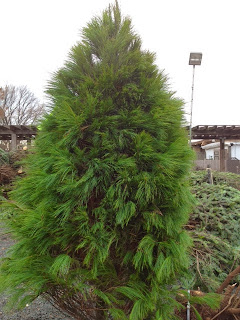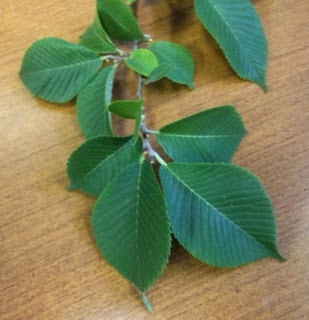Hybridizers have made astonishing advances in flower color, form and longevity to a plant that was just a sprawling 6' shrub. The range of colors has evolved from roadside-red to include burgundies, whites, pinks, peaches, salmons, candycane-colored bicolors and more. It seems there's a new flavor or two to consider every December. Ah, the designer poinsettia...
Such humble beginnings suggest a no-nonsense, low-care-plant, which is largely correct. The biggest poinsettia caution is to avoid temperature extremes, especially cold. Make sure the plant is sleeved when it leaves the greenhouse. Take it directly to your warm car. Like Monopoly, go directly home with your beauty. Don't pass go, don't go shopping for hours and leave the plant unattended as your car's interior temp drops.
Once safely home in warmth, remove the paper sleeve. Gently tear it off. Don't try to pull it over the top. "Points" are brittle, they will snap. Place in a warm room. 65 degrees F and higher is fine. A brightly lit window with some direct winter sun will make your plant comfy. Like any houseplant, avoid placing the plant against the cold glass of a window or near a drafty door. It will freeze! Allow the soil surface to dry well before watering. When it's time for a drink always use warm water. Don't keep your poinsettia soaking wet.
For those that prefer something other than Ambassador Poinsett's Euphorbia pulcherrima for holiday decor, Hydrangea, cyclamen and azalea are popular, too. Hydrangea choices in December are generally white, but there are different flower forms (like 'Shooting Star') that you may not have seen. They're all easy care. Everything a poinsettia likes, Hydrangea doesn't. So, spare them the sunny window and the warm room. Keep them damp, damp, damp. Yes, damp. Bright light is fine, but keep them out of direct afternoon sun, and in a cool room. Cooler, better. You'll enjoy them for weeks.
For you that have cool, even cold rooms, cyclamen would be a terrific choice. They revel in temperatures in the 50s and 60s. Not only are the butterfly-like flowers unique, but many of the new hybrids have stunning silver veining and splotching on the heart-shaped leaves. Like Hydrangeas, keep them damp at all times and you can have them in bloom for weeks. No direct sun, thank you. Bright light is all they ask.
It's time for a resurgence in the popularity of florist azaleas. The color choices and beauty of a fully colored azalea are stunning, I think. Like cyclamen, the cooler their living space, the longer they'll delight you. It's easy to get them to last a month when you buy them with buds cracking color. Again, bright light (no direct sun) and keep them moist. They are usually grown in a peaty soil. Still, I water every other day when I have one.




























































